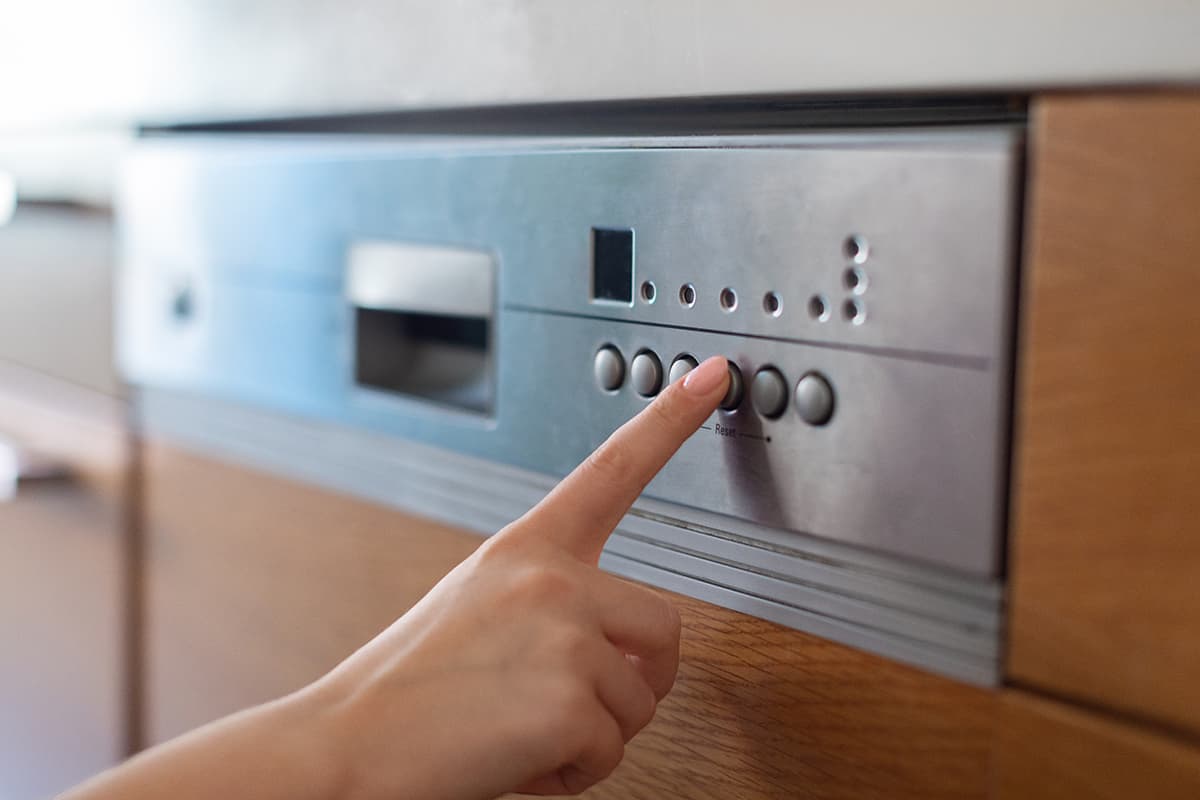Dishwashers are amazing machines that help us keep our dishes clean with minimal effort. They use a combination of water, detergent, and heat to wash, rinse, and dry our dishes, glasses, and silverware. This modern convenience has become a staple in many homes, making our daily lives easier and more efficient.
The basic steps of a modern dishwasher are as follows:
- Pre-wash
- Washing
- Rinsing
- Drying
This article will take you on a journey to discover the inner workings of a dishwasher. We’ll cover the main components and the dishwashing cycle in detail.
The Components of a Dishwasher and Their Functions
A dishwasher is made up of several parts that work together to clean your dishes. Let’s take a closer look at these components and learn how they function.
1. Outer and inner parts
- Dishwasher frame—The frame is the outer structure that supports and protects the dishwasher. It’s usually made of metal or plastic, with a strong base to keep the appliance stable.
- Door and door seal—The door is the front part of the dishwasher that you open to load and unload dishes. It has a rubber seal around the edges to prevent water from leaking out during a wash cycle.
- Insulation—Dishwashers have insulation between the outer frame and inner tub to reduce noise and maintain the internal temperature.
Inner tub and spray arms—The inner tub is where you place your dishes, and it’s designed to hold water during the wash cycle. Spray arms are located at the bottom and sometimes at the top of the tub. They spin and spray water onto the dishes to clean them.
Racks and silverware basket—Dishwashers have racks with slots and compartments for holding dishes, glasses, and other items. A silverware basket is usually found on the bottom rack for holding forks, knives, and spoons.
2. The control panel
The control panel is where you select the settings for your dishwasher. It has buttons and sometimes a digital display to help you choose the right wash cycle and options for your dishes.
- Timer and cycle selection—The timer tells the dishwasher how long to run a cycle, and the cycle selection allows you to choose the type of wash, such as heavy, normal, or delicate.
- Start and cancel buttons—The start button begins the wash cycle, and the cancel button stops it if you need to open the door or make changes.
- Indicator lights and display—These show the progress of the wash cycle and any relevant information, like time remaining or error codes.
3. The plumbing system
The plumbing system supplies water to the dishwasher and removes dirty water after the cycle.
- Water inlet valve—This valve controls the flow of water into the dishwasher. It opens to let water in and closes to stop the flow when the tub is full.
- Drain pump and hose—The drain pump removes dirty water from the dishwasher after the wash and rinse cycles. The hose carries the water to your home’s drainage system.
- Sump and circulation pump—The sump is a small reservoir at the bottom of the dishwasher that collects water during the cycle. The circulation pump moves the water from the sump through the spray arms to clean your dishes.
4. The heating system
Dishwashers use heat to wash and dry dishes effectively.
- Heating element—This coil-shaped component heats the water during the wash cycle and provides heat for drying the dishes.
- Thermostat—The thermostat monitors the water temperature and turns the heating element on or off to maintain the right temperature.
5. The detergent dispenser
The detergent dispenser holds and releases dishwasher detergent and rinse aid during the wash cycle.
- Detergent and rinse aid compartments—These compartments hold the dishwasher detergent and rinse aid. They have lids that keep the substances contained until it’s time to release them.
- Release mechanism—The release mechanism opens the detergent and rinse aid compartments at the appropriate times during the wash cycle, allowing the substances to mix with the water and clean your dishes.
How a Dishwasher Works In 4 Steps – The Dishwashing Cycle

The dishwashing cycle is a series of steps the dishwasher goes through to clean your dishes. It involves filling the dishwasher with water, mixing it with detergent, spraying the dishes, rinsing, and drying.
1. Pre-wash
The pre-wash stage prepares the dishwasher for the main wash cycle.
- Filling the dishwasher—The water inlet valve opens, allowing water to flow into the dishwasher. The water fills the bottom of the tub and the sump, a small reservoir that holds water for the spray arms.
- Initial rinse—The circulation pump moves water from the sump through the spray arms, which spin and spray water onto the dishes. This initial rinse helps remove loose debris and food particles from the dishes.
2. Washing
The washing stage is when the dishwasher cleans your dishes with detergent and water.
- Mixing water and detergent—The detergent dispenser releases detergent into the tub, and the circulation pump mixes it with water. The resulting soapy water is then sprayed onto the dishes.
- Powerful water jets—The spray arms rotate, directing strong jets of water onto the dishes. These water jets remove dirt, grease, and grime, leaving your dishes clean. The dishwasher may have multiple spray arms for better cleaning coverage.
3. Rinsing
Rinsing is the process of removing detergent and any remaining dirt from the dishes.
- Rinsing away the detergent and loosened grime—The dishwasher drains the soapy water and refills with clean water. The circulation pump sends this water through the spray arms, rinsing away detergent and grime.
- Importance of rinse aid—Rinse aid is a liquid that helps the water slide off the dishes easily, preventing water spots and streaks. The dishwasher releases rinse aid from its dispenser during the rinse cycle, ensuring your dishes come out sparkling clean.
4. Drying
Drying is the final stage of the dishwashing cycle, during which the dishwasher removes moisture from the dishes.
- Evaporation—Some dishwashers rely on the natural process of evaporation for drying. They heat the water during the final rinse to a high temperature, causing the water to evaporate from the dishes when the cycle is complete.
- Heated drying options—Other dishwashers use a heating element to speed up the drying process. The element warms the air inside the dishwasher, helping to evaporate moisture from the dishes. This method can be more energy-intensive than natural drying.
- Energy-efficient drying methods—Many modern dishwashers have energy-saving drying features, such as a fan that circulates air or a door that automatically opens at the end of the cycle to release steam and speed up drying.






